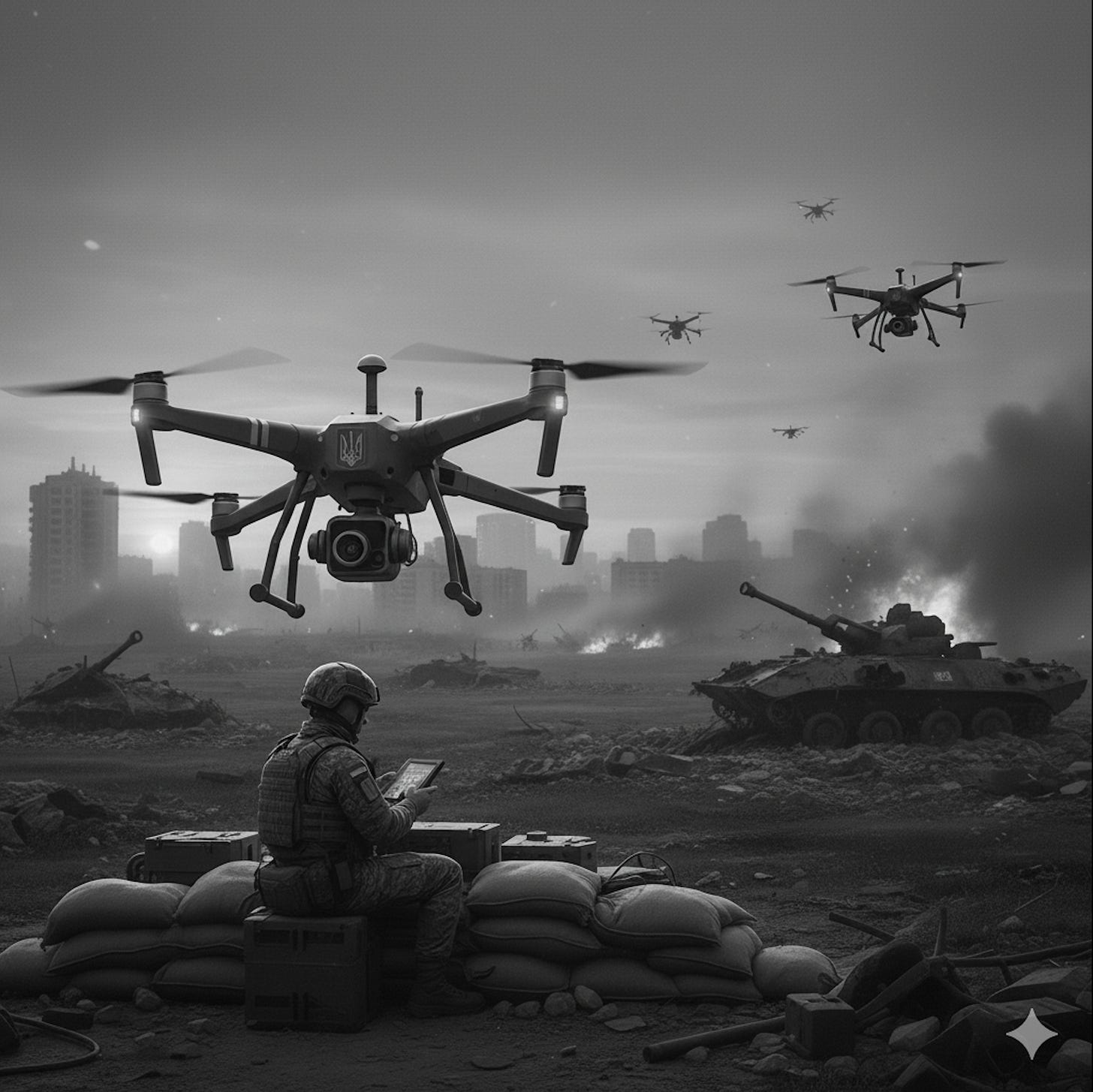Drones, Brinkmanship, and a War Without Compromise
A grinding conflict defined by drones, budgets, and politics—with both Ukraine and Russia converging into militarized, authoritarian systems that could outlast the battlefield.
No compromise on offer
Today marks the 1,312th day of the full-scale war, and the central reality remains unchanged: there is no middle ground. For Moscow, a sovereign Ukraine aligned with the West poses an existential threat to Putin’s regime. For Kyiv, any settlement short of victory risks national collapse and a new invasion. The conflict has hardened into an all-or-nothing struggle of exhaustion and adaptation.
Russia has expanded its theater of pressure. Recently, Denmark experienced a surge in suspected drone incursions, prompting the temporary closure of Copenhagen Airport. Officials also reported drone sightings over multiple military facilities, and Russian jets probed Baltic airspace, including an “unprecedentedly brazen” violation of Estonian airspace last week. These are deliberate tests of NATO’s vigilance and capacity. The Kremlin’s strategy is to remind Western governments and citizens that their skies are vulnerable. This would force NATO to allocate more resources to protecting its member states than to Ukraine. The subtext is clear: continued support for Kyiv could lead to a global war, which Putin believes the West will ultimately avoid.
Sanctions discipline is fraying at the margins. Satellite and AIS data show a Chinese-operated cargo ship, Heng Yang 9, docking in Sevastopol multiple times this summer—the first documented Chinese calls at Crimean ports since 2014. This is not just commerce; it is a signal that Russia is becoming increasingly embedded in a parallel trade network stretching through Asia. Far from buckling under economic pressure, Moscow is finding new lifelines.
Washington’s rhetoric has shifted. President Trump said Ukraine could regain all occupied territory “with the support of the EU and NATO,” a statement widely interpreted as prompting the EU to take the lead as U.S. support for Kyiv wanes. Although the Kremlin has publicly dismissed the comment, it is still stepping up pressure on NATO’s borders.
In Kyiv, politics are hardening. Zelenskyy now says he is “ready to leave office once the war ends” and would push for elections during a ceasefire. However, under martial law, no national elections can be held, and his mandate continues by statute. This means there will be no imminent electoral test while the war drags on, fueling criticism that power is concentrating around the wartime presidency.
The uncomfortable reality is that none of these developments—Russian brinkmanship, sanctions fatigue, Western political shifts, or Ukraine’s internal strains—point toward negotiation. This situation is not trending toward compromise. Instead, it is trending toward a confrontation between systems measured in years, not months.
Keep reading with a 7-day free trial
Subscribe to finformant to keep reading this post and get 7 days of free access to the full post archives.




